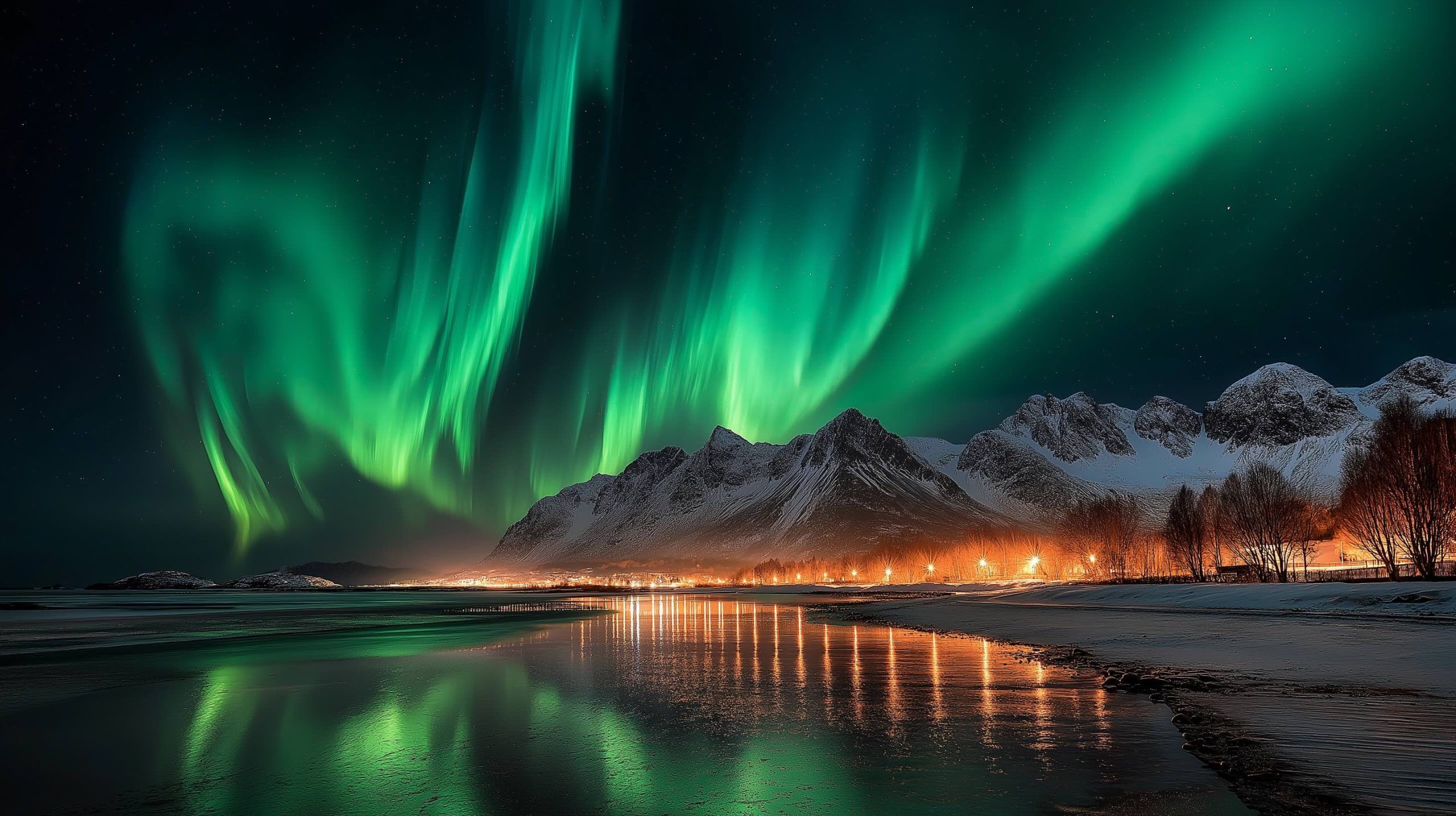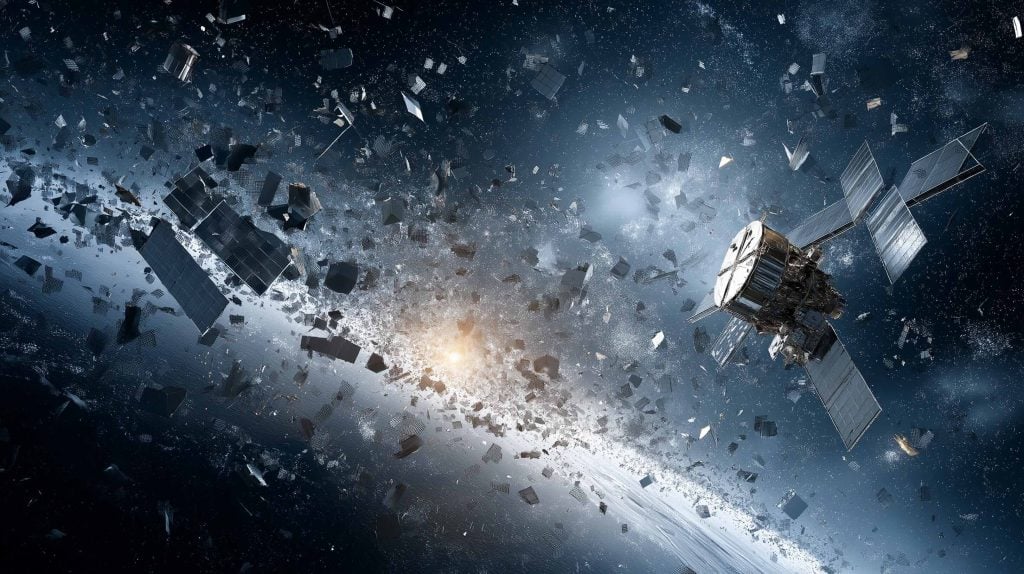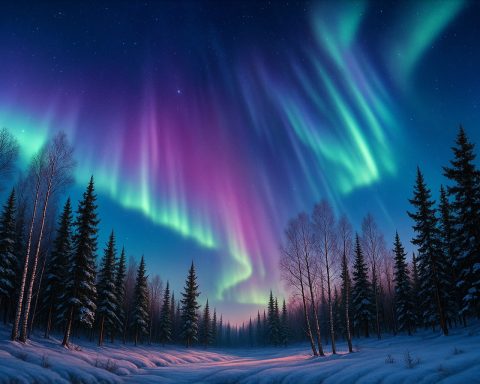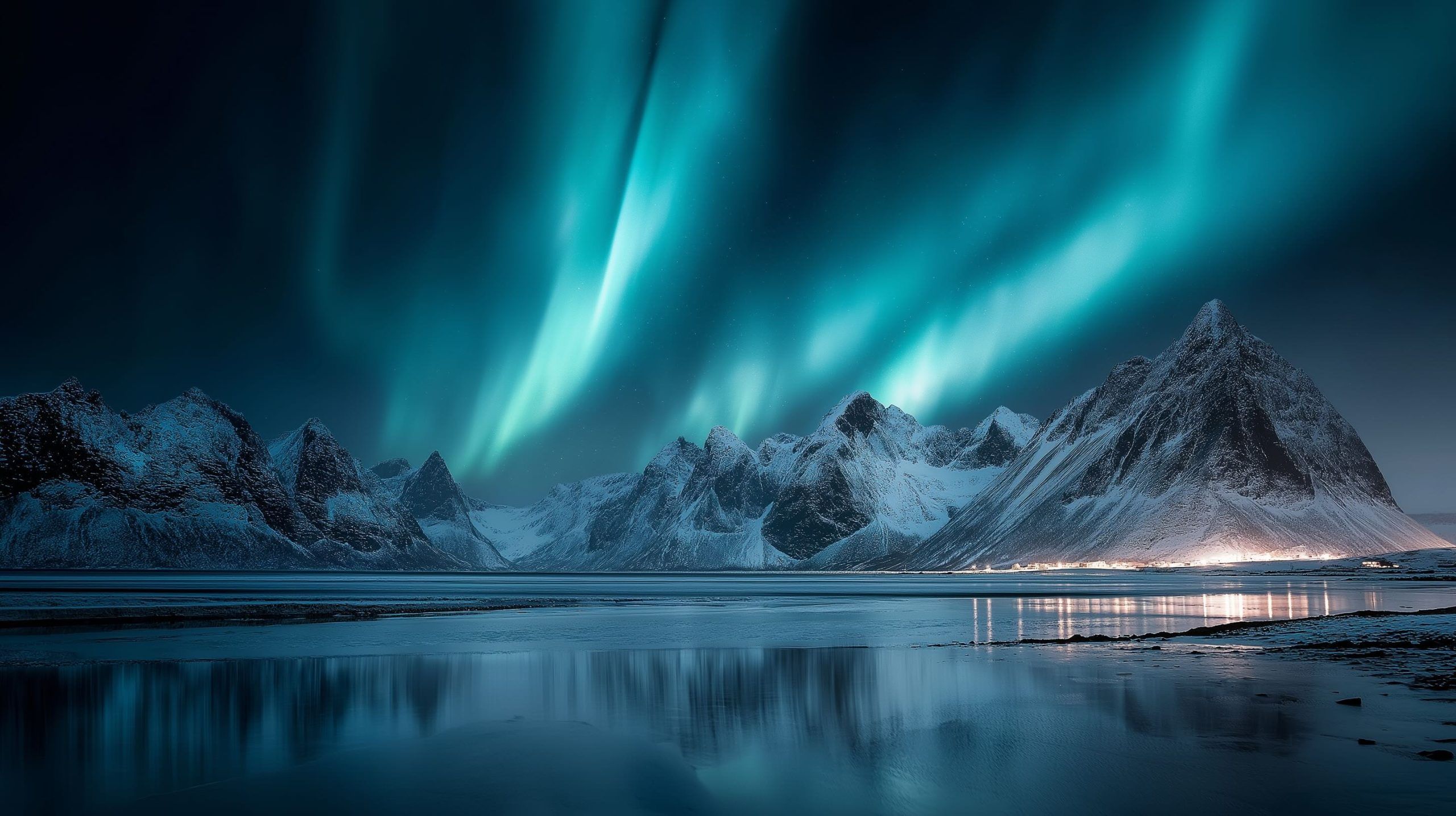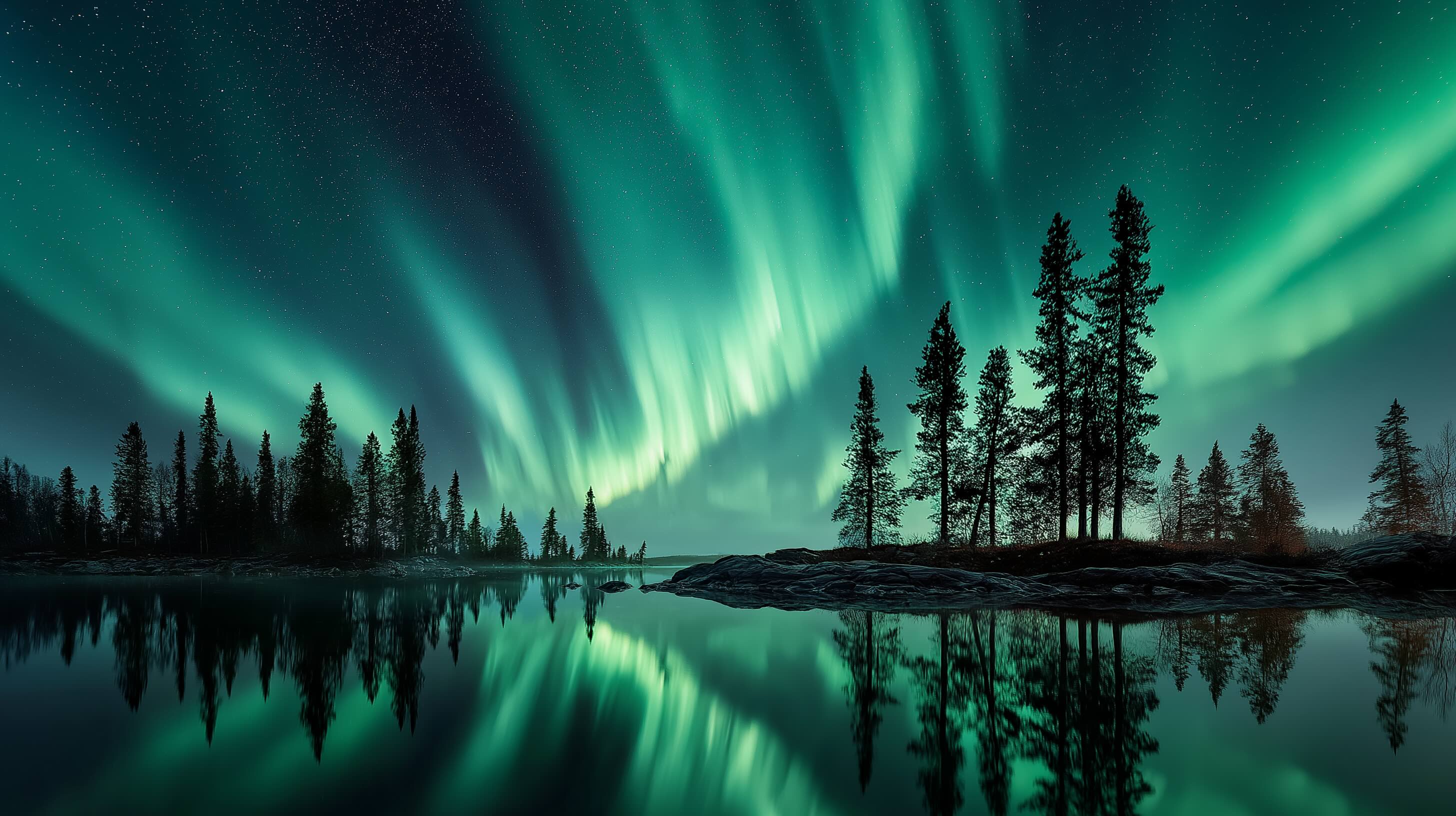- NOAA’s Space Weather Prediction Center issued a G2 (moderate) geomagnetic‑storm watch for the night of 25 June 2025.
- A negative-polarity coronal hole crossing the Sun’s central meridian is releasing plasma at roughly 500–800 km/s toward Earth.
- The fast solar wind could drive auroras as far south as Colorado, New York and Oregon and briefly disturb power grids, satellites and GPS.
- Peer‑reviewed modeling in Nature Scientific Reports shows high-speed streams routinely trigger medium geomagnetic storms that can inject more energy into near‑Earth space than rarer CMEs over a solar cycle.
- A compressed co-rotating interaction region at the leading edge combined with a southward interplanetary magnetic field can amplify geomagnetic activity.
- Forecasters indicate a probable Kp of 5–6, with auroras potentially visible across 14 U.S. states.
- Solar Cycle 25 is cresting around July 2025 with a smoothed sunspot number near 115, and large equatorial coronal holes may yield monthly high-speed‑stream storms through 2026.
- Observers are advised to monitor real-time Kp, aim for rural horizons north of Interstate 90, and use long-exposure smartphone photos (5–10 seconds, ISO 800–1600).
- Dense plasma pulses can raise thermospheric density by 20–40%, increasing drag on low-Earth-orbit objects such as the ISS and Starlink satellites.
- Daniel Verscharen of University College London says the hole’s equatorial location should bring fast wind by Friday night into Saturday morning and could reach about 1.8 million mph.
A fast‑moving stream of plasma from a yawning coronal hole is barreling toward Earth, and forecasters at NOAA’s Space Weather Prediction Center (SWPC) have issued a G2 (moderate) geomagnetic‑storm watch for the night of 25 June 2025. If the solar‑wind blast couples efficiently with our planet’s magnetic field, auroras could surge as far south as Colorado, New York and Oregon while briefly nudging power grids, satellites and GPS out of their comfort zones. [1] Multiple agencies and media outlets—including Live Science, Space.com, Forbes and the U.K. Met Office—have updated their outlooks within the past 24 hours, all pointing to the same culprit: a negative‑polarity hole that has opened near the sun’s equator. [2] [3] [4] [5]
1. Anatomy of the Current Coronal Hole
Solar Dynamics Observatory imagery shows a dark “canyon” in the 193‑Å EUV band—scientists call it a coronal hole—now crossing the sun’s central meridian. These regions are cooler and less dense, so magnetic field lines open into interplanetary space and let plasma escape at 500 – 800 km s⁻¹. Peer‑reviewed modeling work in Nature Scientific Reports finds that such high‑speed streams (HSSs) routinely trigger medium storms that, over a solar cycle, can dump more energy into near‑Earth space than rarer but stronger CMEs. [6]
Why this hole is geoeffective
- Its equatorial latitude aligns the outflow squarely with Earth’s orbital plane.
- The stream is chasing slow ambient wind, so a compressed “co‑rotating interaction region” at the leading edge can further amplify geomagnetic activity.
- The interplanetary magnetic field has already tipped southward—an orientation that lets energy leak into the magnetosphere more efficiently. [7]
2. What Forecasters Expect Tonight
| Agency/Outlet | Alert Level | Peak Window (UTC) | Southward Aurora Line |
|---|---|---|---|
| NOAA SWPC | G2 Watch | 25 Jun 23:00 – 26 Jun 06:00 | ~41° N (SD, NY, OR) [8] |
| Met Office (U.K.) | Active–G2, slight G3 risk | 25/12:00 – 26/12:00 | Northern England & Scotland [9] |
| Space.com live blog | Kp 5–6 probable | Local 22:00‑03:00 | 14 U.S. states (AK → ME) [10] |
| Fast Company | Best views 10 p.m.–2 a.m. | Local | 15 states listed [11] |
Clear, dark skies required; twilight is still strong just after the solstice.
SWPC’s aurora dashboard shows the OVATION model pushing the auroral oval roughly 1 000 km farther south than average for a G‑quiet day. [12] Spaceweather.com’s time‑machine page corroborates the arrival timing, noting the same coronal‑hole stream should reach Earth late 25 June or early 26 June.
3. Where & How to Look Up
- North America: Aim for rural horizons north of Interstate 90; smartphone “night mode” reveals faint curtains invisible to the naked eye. [13]
- Europe: From Iceland and northern Scotland down through southern Scandinavia if Kp ≥ 6. [14]
- Timing Hack: Auroras often intensify after local midnight when the solar‑wind pressure peaks and Earth’s nightside magnetosphere tilts sunward. [15]
- Cloud Factor: AccuWeather notes clearing in the northern Plains and Great Lakes tonight—ideal for sky watching.
4. Implications for Technology & Infrastructure
| System | Typical G2 Impact | Why It Matters |
|---|---|---|
| Power grid | Corrective currents up to 200 A in high‑lat wires; operators on alert | Carrington‑class storms are rare, but medium events still degrade transformers over time. [16] |
| Satellites & space junk | Thermospheric density can spike 20‑40 %; low‑orbit craft lose altitude faster | 2024’s extreme G4 storm prematurely ended several CubeSat missions. |
| Navigation & GPS | Position error grows to 10 m+, especially at high latitudes | Airlines reroute polar flights to maintain comms. [17] |
| HF Radio | Blackouts at 3 – 30 MHz on the nightside | Amateur operators report fading and flutter. [18] |
Recent research shows that HSS‑driven storms can compress preceding CMEs and double their geoeffectiveness, underscoring the need for real‑time monitoring. Dense plasma pulses also expand and contract Earth’s upper atmosphere, increasing drag on everything from the ISS to Starlink trains.
5. Expert Voices
- Dr. Doug Biesecker, SWPC solar physicist: “Just because we label this a moderate storm doesn’t mean we can let our guard down; the Sun’s impact on daily life is real and unceasing.” [19]
- Dr. Tamitha Skov, “Space Weather Woman”: “A wide coronal hole brings extended fast solar wind and #aurora views through this week—expect sporadic G1–G2 conditions through the weekend.” [20]
- Dr. Daniel Verscharen, UCL: “The hole’s equatorial location makes it especially interesting; fast wind should arrive by Friday night into Saturday morning and could reach 1.8 million mph.”
- Clinton Wallace, SWPC Director: Called the May 2024 G4 event an “unusual and potentially historic” reminder that preparedness is essential; tonight’s G2 is a real‑time drill.
6. Bigger Picture: Solar Cycle 25 Nears Its Crest
Solar Cycle 25 is ramping toward a predicted July 2025 peak near a smoothed sunspot number of 115, essentially matching Cycle 24 but with a sharper ascent. [21] As cycles peak, large equatorial coronal holes become more common, meaning HSS storms may come monthly—not yearly—through 2026.
7. Aurora‑Hunting Game Plan
- Monitor Kp in real time (SWPC dashboard). Aim for Kp ≥ 6 if you live south of 45° N. [22]
- Scout dark sites now using light‑pollution maps; city glow kills faint pillars faster than clouds. [23]
- Use long‑exposure phone shots (5–10 s, ISO 800‑1600). Even weak arcs pop on screens. [24]
- Stay flexible & patient—auroras often surge after midnight as solar‑wind density peaks.
8. Further Reading & Real‑Time Resources
- NOAA SWPC Alerts, Watches & Warnings – continuously updated bulletins. [25]
- Spaceweather.com – dynamic solar images and solar‑wind data feed.
- Nature Scientific Reports (2025) – in‑depth look at how coronal‑hole streams power medium storms. [26]
- AccuWeather Astronomy – cloud‑cover forecasts aligned to aurora probabilities.
Tonight’s G2 storm is a vivid reminder that the Sun’s “quiet” coronal holes can light up half a continent and jostle critical technology in a single night. Keep your camera handy, look north after dark—and remember that even moderate space weather is a rehearsal for the bigger fireworks likely as Solar Cycle 25 hits its stride in the coming year.
References
1. www.swpc.noaa.gov, 2. www.livescience.com, 3. www.nesdis.noaa.gov, 4. www.space.com, 5. www.space.com, 6. en.wikipedia.org, 7. www.space.com, 8. www.swpc.noaa.gov, 9. www.space.com, 10. www.nesdis.noaa.gov, 11. www.noaa.gov, 12. apnews.com, 13. www.space.com, 14. www.space.com, 15. www.nesdis.noaa.gov, 16. www.swpc.noaa.gov, 17. www.livescience.com, 18. www.livescience.com, 19. www.gi.alaska.edu, 20. www.swpc.noaa.gov, 21. www.gi.alaska.edu, 22. apnews.com, 23. www.noaa.gov, 24. www.nesdis.noaa.gov, 25. www.swpc.noaa.gov, 26. en.wikipedia.org
